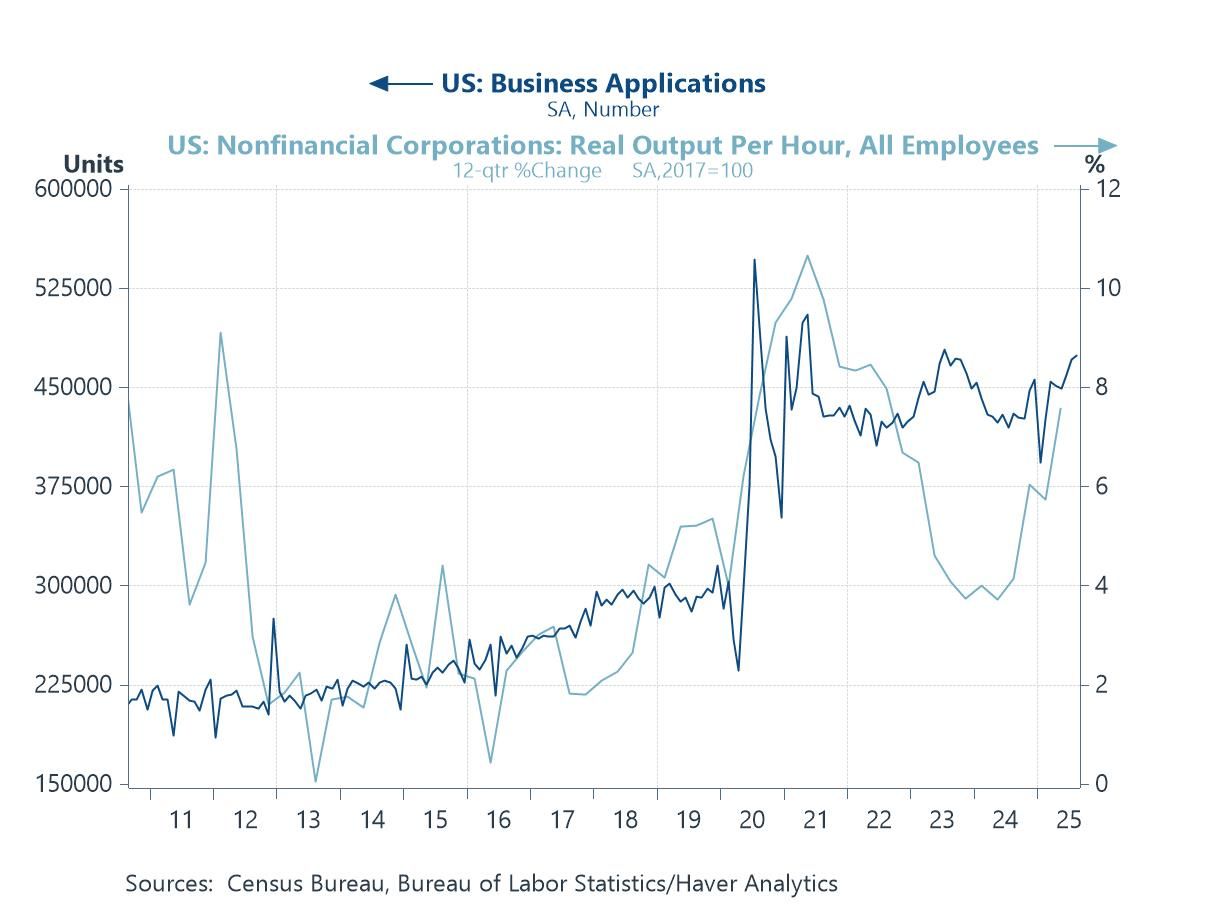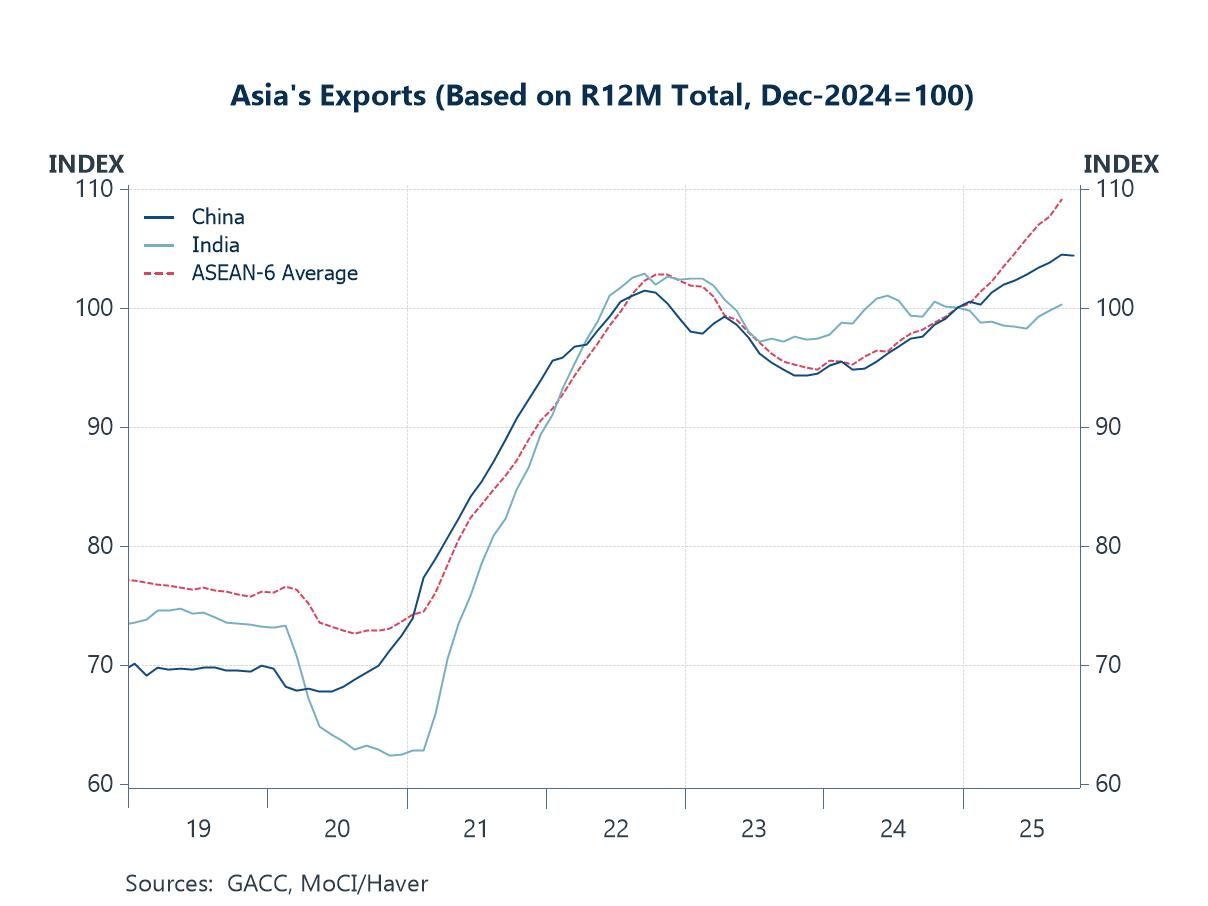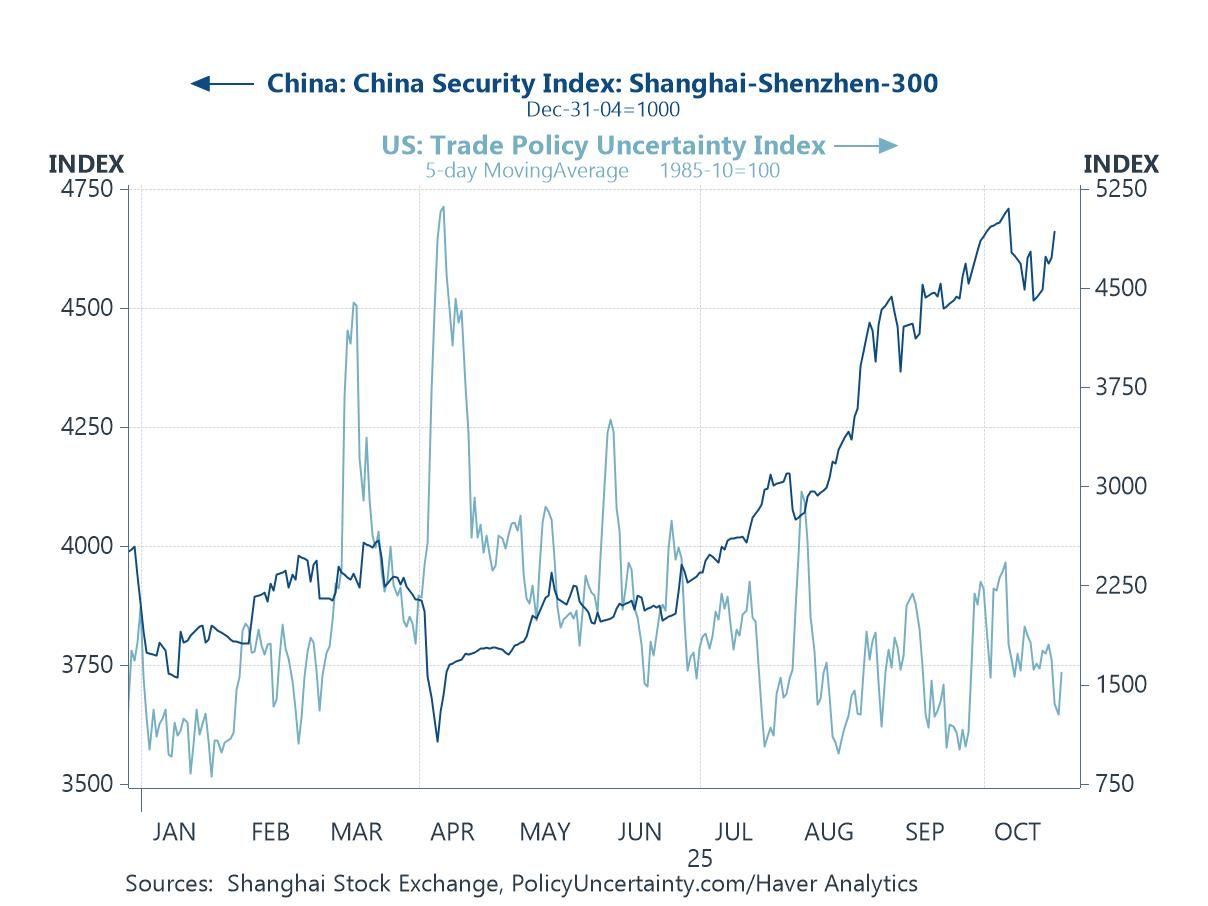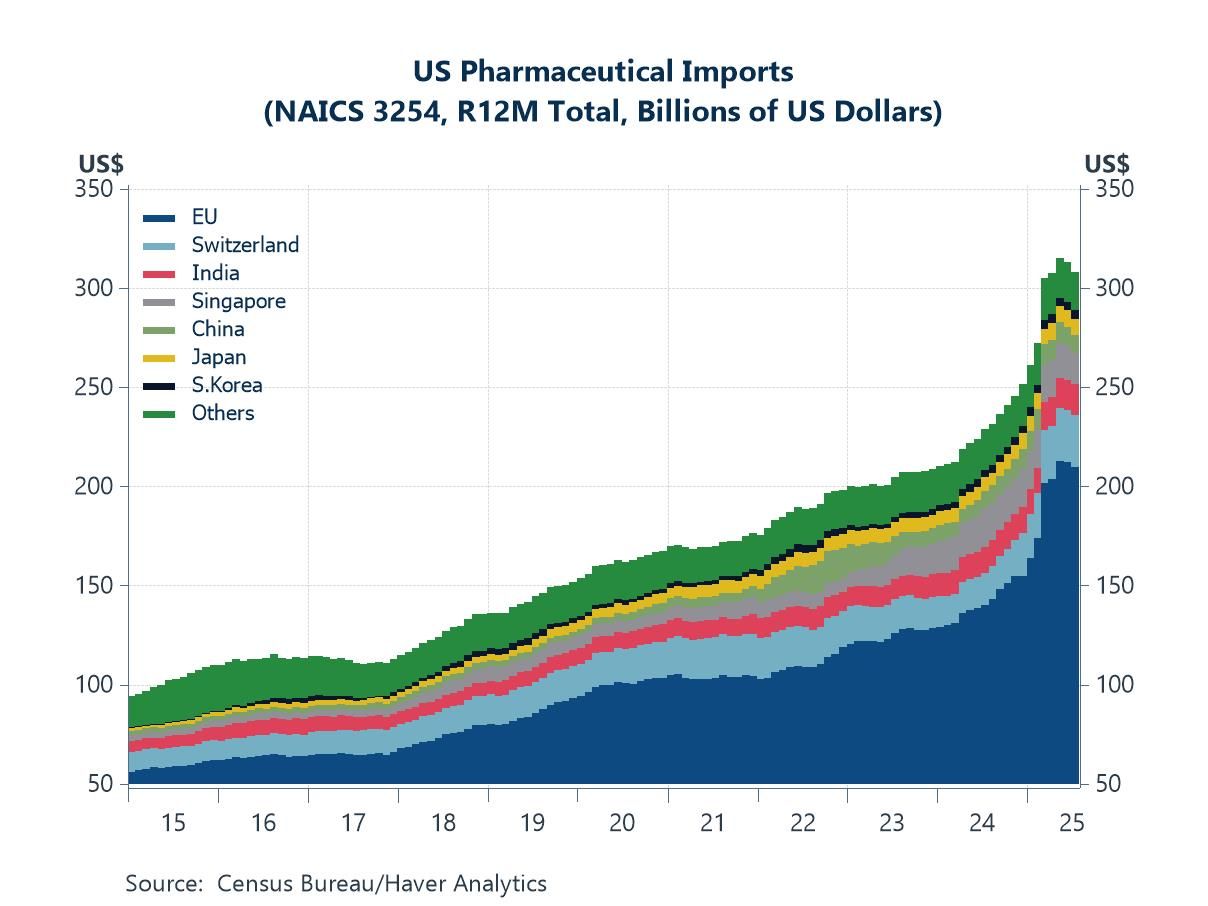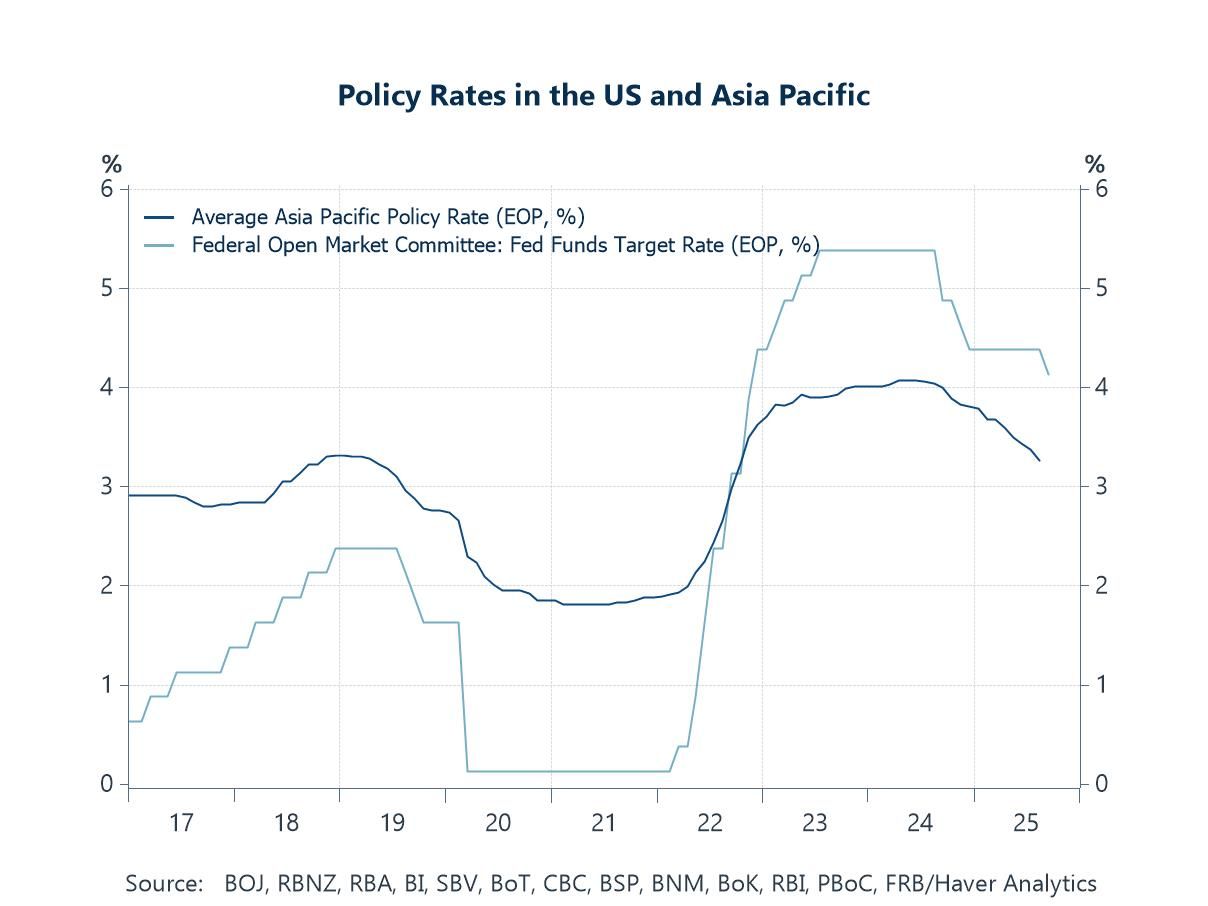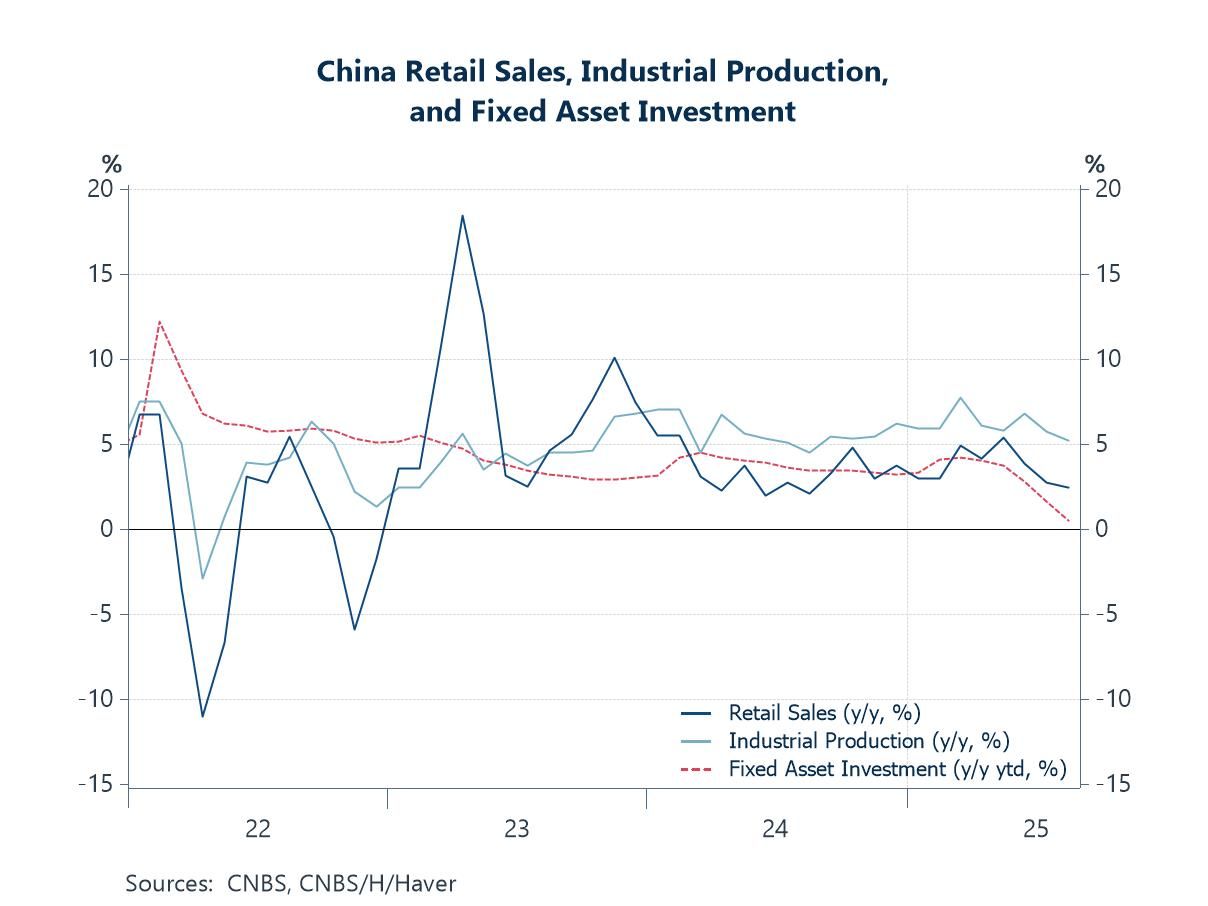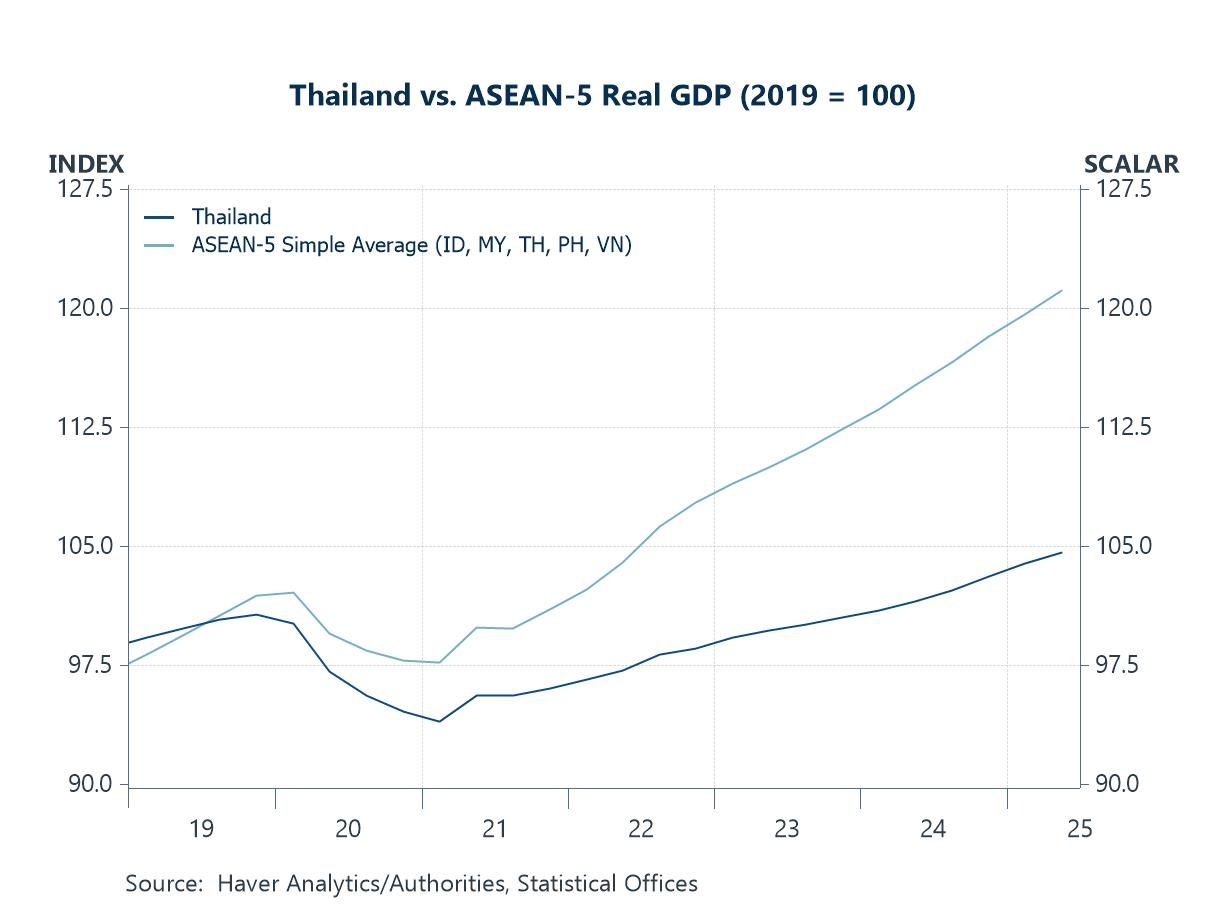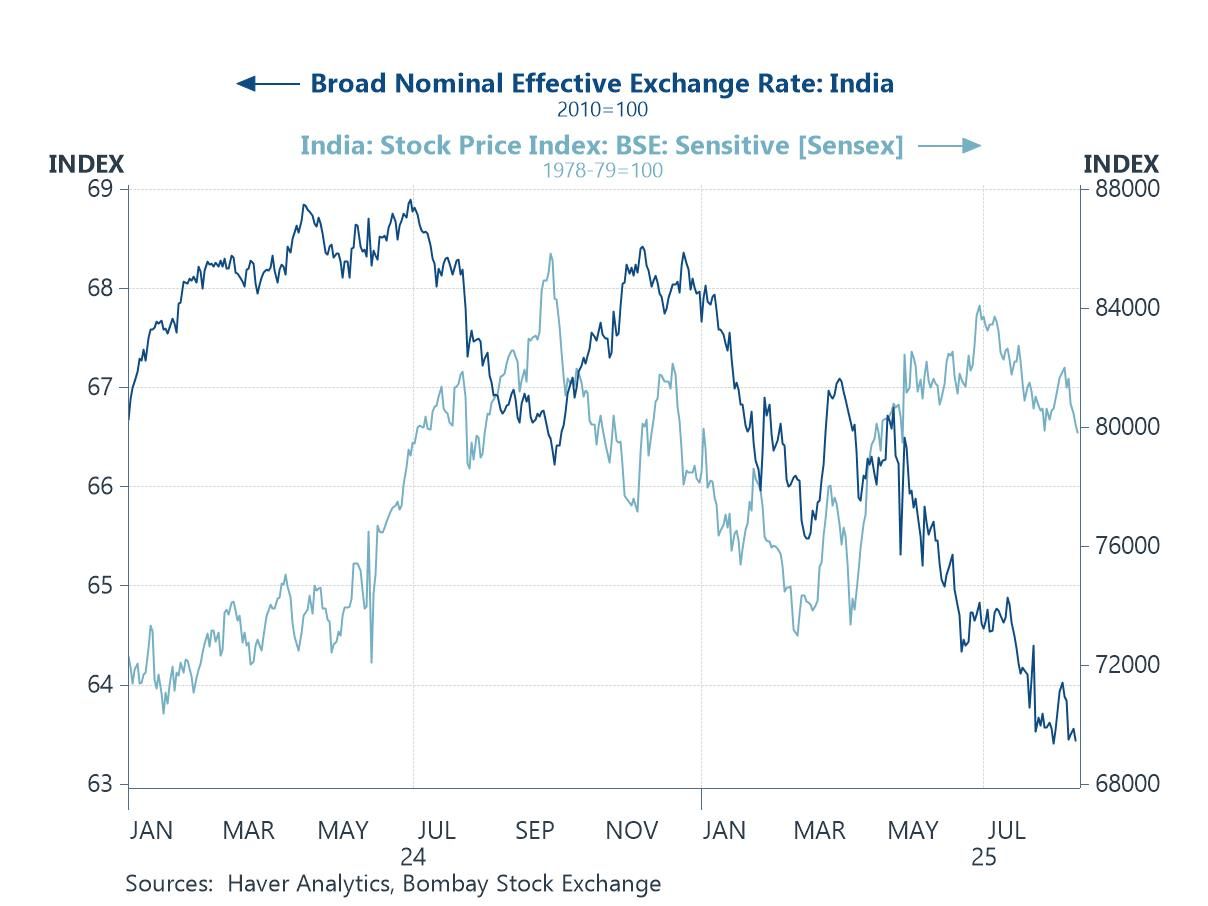This week, we assess Asia through a risk lens, given the recent flare-ups across the region. Japan–China tensions, following Japanese Prime Minister Takaichi’s recent remarks on Taiwan, have prompted some retaliatory measures from China, including travel advisories against visiting Japan. This raises the risk of a dent to Japan’s tourism income this year, given the significance of aggregate Chinese tourism expenditure (chart 1), although any such impact would come at a time when Japan is already grappling with the effects of overtourism. Beyond Japan–China relations, investors are also bracing for the Bank of Japan’s (BoJ) final scheduled policy decision of the year, where a rate hike is expected despite Takaichi’s pro-growth fiscal stance. This expectation reflects ongoing yen weakness (chart 2), alongside encouraging results from Japan’s Q3 Tankan survey, among other factors. While the anticipated hike is not, in itself, a risk, the associated increase in financing costs—coupled with the likelihood of higher government bond issuance to support growth objectives—adds to investor concerns.
Risks are also evident in China, particularly after the November data docket showed a continued deterioration in growth across multiple sectors (chart 3). While China’s 5% growth target for the year remains within reach, achieving it appears to hinge on a narrow set of growth drivers, notably trade. On this front, China has defied earlier investor concerns to record a substantial widening of its trade surplus this year, despite a worsening bilateral trade balance with the US (chart 4). However, while supportive of growth, this development risks drawing increased pushback from non-US trading partners that have been absorbing China’s excess capacity.
Elevated risks are also present elsewhere in Asia, particularly in Southeast Asia, where renewed military clashes between Thailand and Cambodia have once again pushed bilateral tensions to the fore (chart 5). Thailand additionally faces political uncertainty ahead of early elections, following Prime Minister Anutin’s dissolution of parliament last week. Lastly, we turn to semiconductor- and AI-related risks, which are especially pertinent to Asia given the dominance—and reliance—of Taiwan and South Korea in the sector. A key risk lies in the current extent of market optimism surrounding future AI-related earnings (chart 6), suggesting greater scope for disappointment than for further upside surprises.
Japan-China tensions Geopolitics will likely remain front and centre in Asia heading into the new year, with several flashpoints carrying the risk of broader regional spillovers. One such case is the recent flare-up in tensions between China and Japan, following new Japanese Prime Minister Takaichi’s parliamentary remarks on Taiwan. Since then, Chinese authorities have rolled out a series of measures — urging Chinese citizens to avoid travelling to or studying in Japan, reinstating an import ban on Japanese seafood, among others. While none of these steps are particularly substantial on their own, they underscore a rapidly deteriorating bilateral dynamic. The economic implications are not trivial. As shown in chart 1, spending by Chinese tourists has historically made up a significant share of Japan’s total inbound tourism receipts — roughly a quarter in recent quarters — with especially strong concentrations in certain regions such as Osaka. Although the absence of Mainland Chinese tourists has been keenly felt since tensions escalated, early indications suggest that increased arrivals from other countries have helped offset some of the shortfall. More recently, a series of close military encounters between China and Japan has further heightened concerns. The risk of miscalculation has grown, raising the possibility of an inadvertent escalation at a time when geopolitical sensitivities in the region are already elevated.



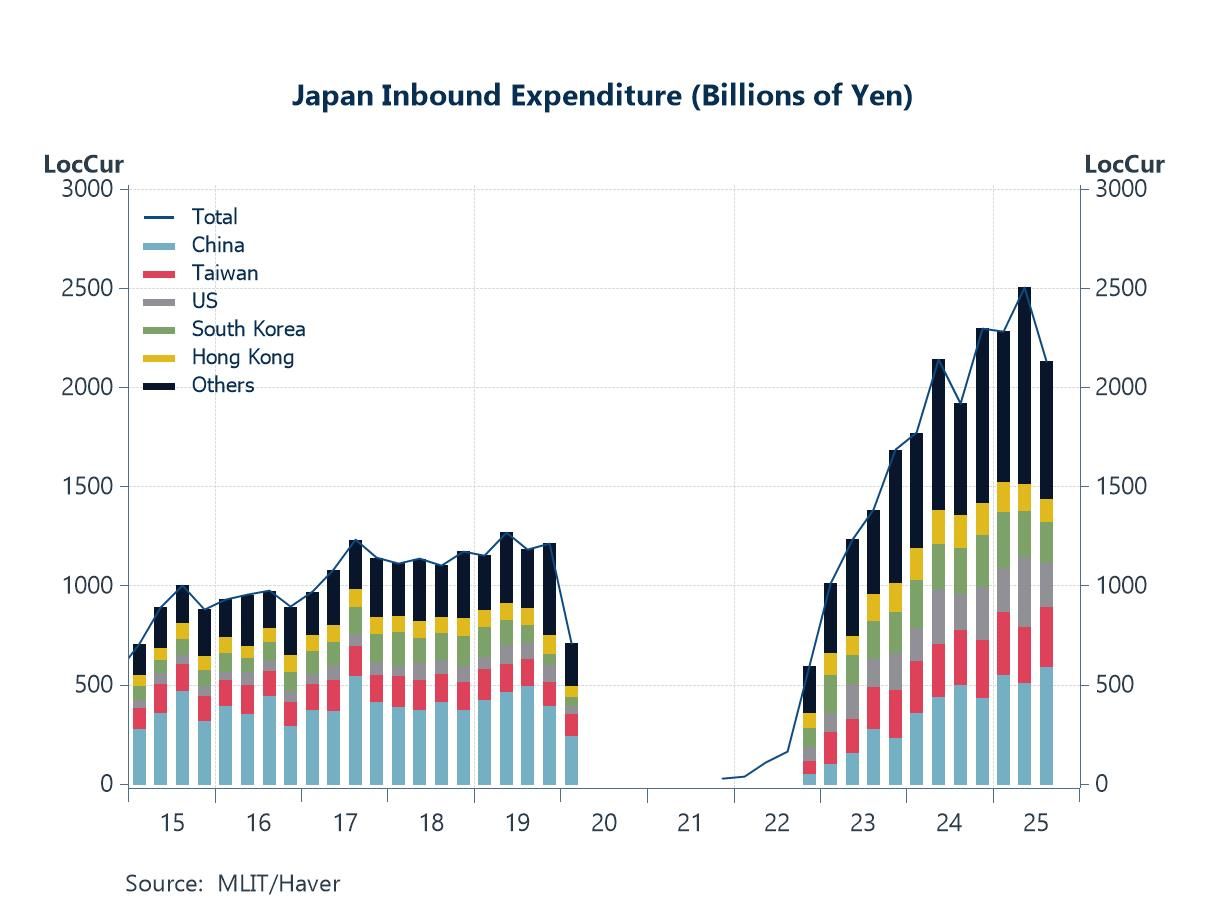
 Asia
Asia